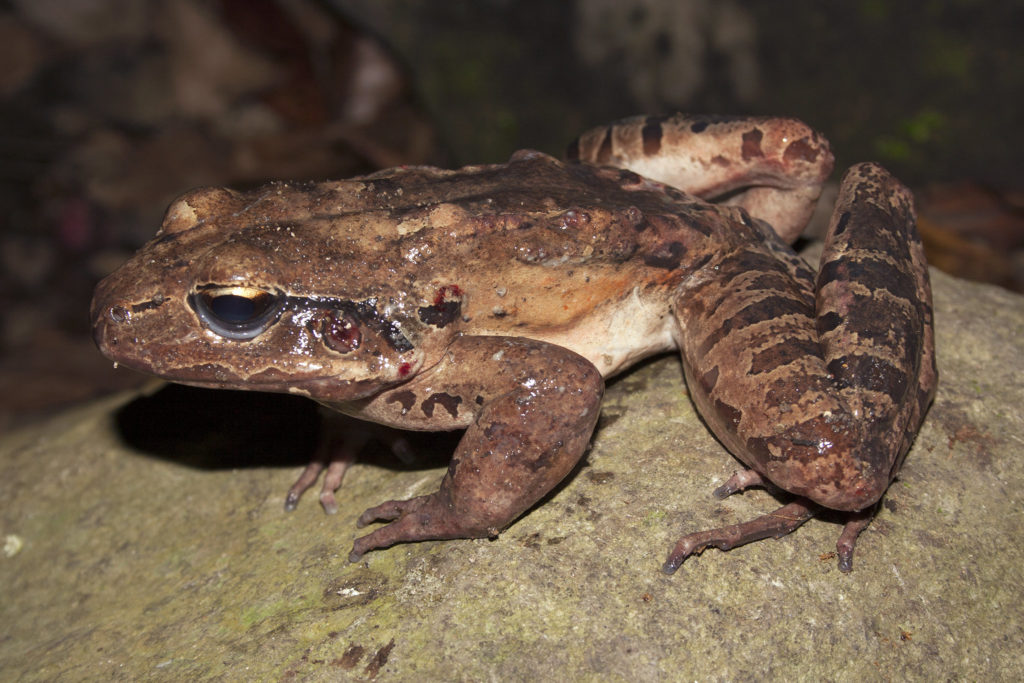 A new study published in the journal «Science» reveals that the most recent strain of the amphibian chytrid fungus, which has caused the decline and extinction of several amphibian species around the world in recent decades, originated in Southeast Asia in the early XNUMXth century.
A new study published in the journal «Science» reveals that the most recent strain of the amphibian chytrid fungus, which has caused the decline and extinction of several amphibian species around the world in recent decades, originated in Southeast Asia in the early XNUMXth century.
This more aggressive strain of the fungus had already been detected in Serra da Estrela and elsewhere in the Iberian Peninsula.
Since the 1990s, the link between chytrid has been known (Batrachochytrium dendrobatidis), a microscopic fungus, and the decline of several amphibian species around the world.
The fungus infects the skin of frogs, toads and other amphibians causing a condition called chytridiomycosis. In more susceptible species, this fungus has been responsible for numerous episodes of mass mortality. However, it is not yet known where and when this fungus and its most aggressive lineage originated.
The results of the study now published, which involved an international team of more than 50 researchers from 38 institutions, reveal that this lineage may have emerged in Southeast Asia, particularly in the Korean peninsula.
“This is an issue that has been at the center of fierce debates over the last two decades, with suggestions on the table as diverse as South Africa, North and South America or even Japan”, explains Gonçalo M. Rosa, researcher from the CE3c – Center for Ecology, Evolution and Environmental Change (Faculty of Sciences, University of Lisbon) and from the London Institute of Zoology (United Kingdom).
The researchers sequenced the genome of samples of this fungus collected from around the world and combined this data with the results of other studies already published, for a total of 234 samples.
Genetic analysis revealed the existence of four main strains of this fungus, three of which are distributed globally – and one of them only exists in the Korean peninsula, in frogs native to the region. The results also indicate that – contrary to previous estimates – this more aggressive lineage will have diverged from its most recent common ancestor in the beginning of the XNUMXth century.
“Instead of going back thousands of years, as was previously thought, we now more robustly estimate that the emergency occurred 50 to 120 years ago,” adds Matthew Fisher, professor at Imperial College London (UK).
This date coincides with an intensification of human activities in that part of the globe, with an increase in intercontinental trade that will have contributed to the rapid expansion of the fungus throughout the world.
In Portugal, this fungus was associated for the first time with an episode of mortality in 2009 in Serra da Estrela, where, since then, Gonçalo M. Rosa has established a monitoring study. “The midwife toad populations were the most affected, especially in the elevated areas of Serra da Estrela where, in some ponds and lakes, the animals were simply no longer seen or heard”, adds the researcher.
The results of this study, coordinated by Imperial College London, indicate that the movement of amphibians caused by human activity – for example through the trade in pets or for gastronomic purposes – will have had a significant contribution to the spread of this strain globally.
The authors recommend greater control over the trade of amphibians from Asia, as well as more attention to hygiene and biosafety measures in their transport, due to the high risk of exporting previously unknown strains out of this region.
Caption of the photo above: Mountain Fowl Individual (leptodactylus fallax) with chytridiomycosis on the island of Montserrat, where the population was pushed to the brink of extinction © Gonçalo M. Rosa
Author CE3c Communication Office – Center for Ecology, Evolution and Environmental Change
Science in the Regional Press – Ciência Viva


















Comments